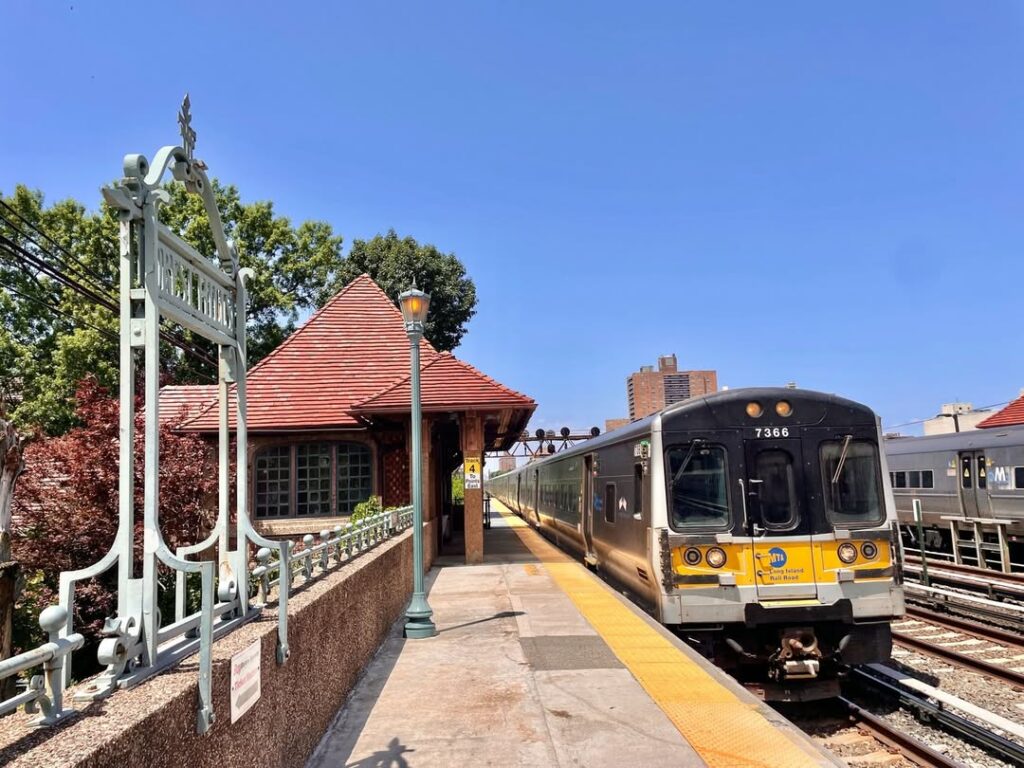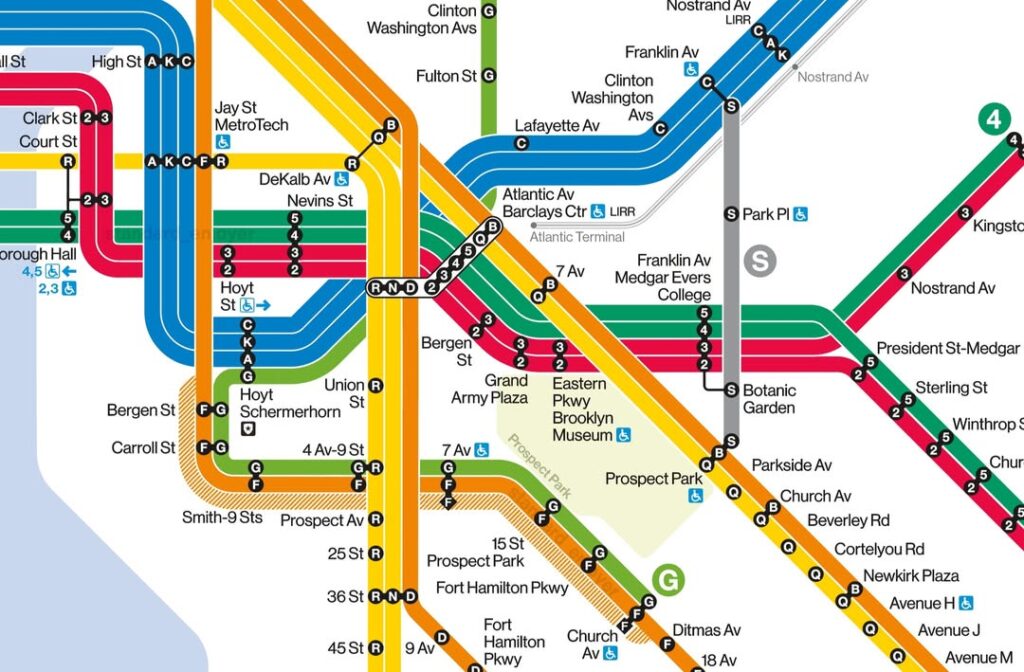The LIRR Subway access gives you an uninterrupted and affordable opportunity to get to any place in the five boroughs or any community in Long Island with ease, using the subway railroad system. The Penn Station, Grand Central Madison, Atlantic Terminal, and Jamaica Station are the main transfer stations where it is easy to change LIRR regional trains to various subway lines in a few minutes. This combined network allows commuters to escape traffic, save time, and get to business districts, attractions, and neighborhoods all over Manhattan, Brooklyn, Queens, the Bronx, and other areas, making Subway LIRR collaboration a major component of the day-to-day transport in New York.

LIRR Subway
The transportation network in NYC is extremely large and intricate, and it caters to millions of commuters per day. One of the most crucial ones is the Long Island Rail Road (LIRR) and the New York City Subway, which form a great transportation core to and out of Manhattan, nd Brooklyn, and Queens, among others. To people who are new to the city (or even frequent commuters), the relationship between the LIRR and the subway may occasionally be bewildering. The two systems have various tickets, various stations, and transfer points, so it is essential to understand how both systems interact.
This guide will take you through all the information you need to know about the LIRR Subway connection, including combined ticket deals, transfer points, station information, and maps. We will also do a LIRR vs Subway comparison, provide you with free transfer opportunities, and provide you with straightforward information about how to make your commuting easier.
Understanding the LIRR and Subway Connection
The Long Island Rail Road (LIRR) is a commuter rail network linking Long Island, Queens, Brooklyn, and Manhattan. It is also run by the MTA (Metropolitan Transportation Authority), which is the same agency that runs the New York City Subway, Metro-North Railroad, and MTA buses.
The subway is commonly combined with the LIRR among daily commuters to get to workplaces, schools, and entertainment centers. The most important transfer points, such as Jamaica Station, Atlantic Terminal, and Penn Station, are used to switch between the two systems.
Combination LIRR Subway and LIRR Tickets
Whether commuters can use combined subway and LIRR tickets is one of the most frequent questions people tend to ask. Although the LIRR and the Subway are two different systems, the MTA has tried to simplify the travel process.
No unlimited pass currently exists that applies to both systems. Nevertheless, you may buy City Tickets with discounted fares on the LIRR in New York City, and then ride the subway with a MetroCard or OMNY. Others also utilize the monthly LIRR passes, which they can combine with unlimited MetroCards.
To travel smoothly, applications such as the MTA TrainTime App can be used to buy LIRR tickets online, and OMNY is a great way to enter the subway quickly and without contact. The MTA is also planning on integrating the fare systems in the future, and this may provide easier combined ticketing options.
Subway Lines at Jamaica LIRR Station
One of the busiest interchange stations of the subway lines and the LIRR is Jamaica Station. It links Long Island commuters to Manhattan, Brooklyn, and Queens. The LIRR Station Jamaica subways are:
- E Train- operates to Manhattan and the World Trade Center.
- J Train- links Lower Manhattan and Brooklyn.
- Z Train- express service on the J line at rush hours.
Commuters in Jamaica can also use the AirTrain JFK, which links the John F. Kennedy International Airport. This renders Jamaica Station an important station not only to the daily commuters but also to the travelers.
MTA Subway Bus Long Island Rail Road Metro North
This network is a complex one owned by the Metropolitan Transportation Authority (MTA), which comprises the MTA subway, bus, Long Island Rail Road, and Metro North services. This integration enables millions of riders daily to travel between boroughs, counties, and even into adjacent states. The MTA subway envelops the 5 boroughs of New York City with more than 400 stations, and buses fill the remaining gaps by serving local communities that lack direct access to the subway.
The Long Island Rail Road (LIRR) goes further into Long Island, as far as Suffolk County. It is the most used commuter railroad in the United States, with millions of passengers every year. Equally, Metro-North Railroad serves Westchester, Hudson Valley, and some of Connecticut, and provides the suburban commuters with direct transit to Manhattan’s Grand Central Terminal.
These systems together form a great regional transit system. As an example, a commuter in Long Island could take the LIRR to Penn Station, switch to the subway to take the ride to Brooklyn, or board an MTA bus to finish the last leg of the trip. This is the level of integration that makes it available and convenient throughout the metropolitan region.
The entire transport system is one giant network of the MTA subway, bus, Long Island Rail Road, and Metro-North system. Here’s how they fit together:
- MTA Subway: Travels 24/7 throughout the 5 boroughs of NYC.
- Buses: The buses operate local and express routes throughout the city, and in most cases, they serve the subway and LIRR stations.
- Long Island Rail Road (LIRR): Commuter trains serving Manhattan, Brooklyn/Queens,/Long Island.
- Metro-North Railroad: This serves NYC North, which includes Westchester, Putnam, Dutchess, and Connecticut.
All these systems worked under the MTA umbrella, which ensures coordination in schedules and transfers. People are already combining them daily, such as commuting to Manhattan by the LIRR, then by taking a subway train or a bus to the place they want to go.
LIRR vs Subway
In making LIRR vs subway comparisons, the critical differences can be narrowed down to the distance, the cost, and the purpose of traveling. LIRR is tailored to serve the commuter who has a long distance between Manhattan and the suburbs of Long Island. It has fewer stops, quicker service, and higher ticket prices. As an illustration, a peak-hour ride between Long Island and Penn Station may cost more than 10 dollars one way.
| Feature | LIRR (Long Island Rail Road) | NYC Subway |
|---|---|---|
| Primary Service Area | Long Island to New York City (Queens, Brooklyn, Manhattan) | All five boroughs of New York City |
| Distance & Reach | Up to ~120 miles east to Montauk and other LI towns | Primarily within NYC limits, ~245 route miles |
| Speed & Frequency | Faster trains, fewer stops, scheduled departures | Frequent service, trains every few minutes during peak |
| Fare Structure | Zone-based pricing; higher cost ($7–$20+ depending on zone) | Flat fare ($2.90 as of 2025) for any distance |
| Comfort | Reserved-style seating, restrooms on many trains | Bench seating, standing room only |
| Peak vs. Off-Peak | Different ticket prices for peak and off-peak times | Same fare 24/7 |
| Operating Hours | Most lines run late night but not all 24/7 | 24/7 service systemwide |
| Purpose | Regional commuter rail for suburbs and long-distance trips | Local city transit for quick urban travel |
| Stations | Fewer stations, larger spacing between stops | Dense station network every few blocks |
LIRR Transfer to Subway Free
One of the questions that commuters raise concerns the possibility of a free ride from the LIRR to the subway. However, in the present time, LIRR and the subway possess different fare systems, i.e,.There exists no general free transfer between the two systems.
However, there are some exceptions:
- Some of the monthly LIRT tickets are grouped with unlimited MetroCards, which come with savings.
- There are certain transfer discounts at Atlantic Terminal (Brooklyn) depending on the type of ticket.
- Such schemes as CityTicket make LIRR rides within NYC cheaper, and the commute becomes more affordable when topped off by a subway ride.
LIRR Subway Map
One of the tools that can help a commuter is a subway LIRR map. Although the Subway map and the LIRR map are typically distinct, numerous materials display them together to point out the main points of transfer.
Significant transfer centers are:
- Penn Station (Manhattan) – LIRR to 1, 2, 3, A, C, E subways.
- Atlantic Terminal (Brooklyn) -LIRR to 2, 3, 4, 5, B, D, N, Q, R subways.
- Jamaica Station (Queens) LIRR to E, J, Z subways.

LIRR Subway Connections
LIRR has a number of significant subway links in NYC that allow commuting to be hassle-free. The most striking ones are:
- Penn Station (Manhattan): Direct access to various subways and buses.
- Atlantic Terminal (Brooklyn): Easy access to subways to downtown Brooklyn and Manhattan.
- Jamaica Station (Queens): A Major interchange station on the subways and provides access to the airport.
- Woodside Station (Queens): Directly served by the 7 line of the subway.
Q1: Is LIRR under the subway?
No, it is a commuter rail system, and the subway is a rapid transit system. Both are operated by the MTA.
Q2: Can I take a Metro Card on the LIRR Subway?
MetroCard and OMNY are fair fares for the subway and bus. LIRR is individual ticketed.
Q3: How can you combine the LIRR with the subway in the cheapest way possible?
Apply CityTickets to discounted LIRR fares in NYC and use them in conjunction with a MetroCard or OMNY.
Q4: Does LIRR operate 24 hours a day, similar to the subway?
The LIRR runs most of its lines late at night; however, the time depends on the line. The subway runs 24/7.
Q5: Does Subway have a single map with the two systems?
Yes, MTA has some interactive resources available online, which display the LIRR subway connection along with each other.
